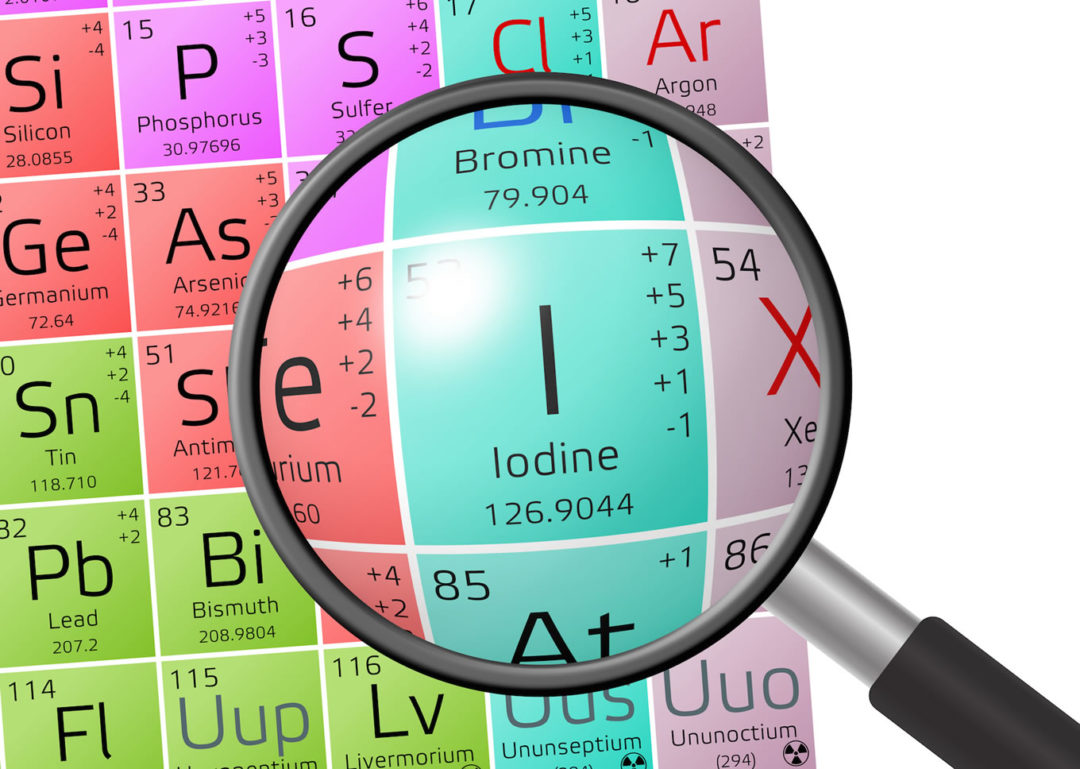When there’s not enough iodine in the diet, it frequently causes a swelling of the thyroid gland known asgoiter. Around the turn of the twentieth century, the area around the Great Lakes and in the Pacific Northwest was known as the “goiter belt,” probably due to the paucity of iodine in their soil. The government asked the Morton Salt Company to begin adding iodine to their salt in 1924, and iodized salt was born.
When iodized salt came into use, most experts figured that iodine deficiency was a thing of the past. But some experts question whether even iodized salt provides enough of this nutrient.
Even if it did, there are other problems with getting all our iodine from salt. For one thing, we’ve been warned off the stuff for so long that people are cutting back—which means they’re getting less iodine. Many are also switching to the wide varieties of artisan salts—Himalayan, sea salt, Celtic—which are not iodized.A 2013 paper in the medical journal Thyroid concluded, "iodine deficiency remains a significant health problem worldwide and affects both industrialized and developing nations.”
Thyroid expert and iodine advocateDavid Brownstein, M.D., concurs. “I believe iodine deficiency is the number one nutritional problem affecting a vast majority of Americans,” he wrote (2).
But don’t be too quick to reach for iodine supplements just yet. My go-to expert on all things thyroid, Dr. Izabella Wentz (aka the Thyroid Pharmacist), points out that 95% or more cases of hypothyroid (i.e., low thyroid) are actuallyHashimoto’s Thyroiditis, and would be madeworseby iodine supplementation. She suggests safety by staying away from iodine supplementation unless specifically prescribed by a health professional. She does, however, recommend a high-quality basic multiple vitamin, which will always have at least the minimum daily requirement.
The best source of iodine is seaweed, which is actually starting to get some traction as a healthy, trendy snack. Kelp, kombu, wakame, hiziki—just about any kind of seaweed is rich in iodine. Seaweed is used as a wrapper for sushi roles, and seaweed snacks are increasingly popular. And they’re pretty tasty!
References
-
E.N. Pearce, M. Andersson and M.B. Zimmermann, "Global iodine nutrition: Where do we stand in 2013?" Thyroid. 2013 May;23(5):523-8. doi: 10.1089/thy.2013.0128. Epub 2013 Apr 18.
- D. Brownstein, Overcoming Thyroid Disorders 2nd Edition, Medical Alternatives Press, 2008.
- I. Wentz, Hashimoto's Thyroiditis: Lifestyle Interventions for Finding and Treating the Root Cause, Went, LLC, 2013
 Jonny Bowden, “the Nutrition Myth Buster” is a board-certified nutritionist and the best-selling author of 15 books including The Great Cholesterol Myth, Living Low Carb, the 150 Healthiest Foods On Earth and Smart Fat. To learn more about healthy living, motivation and nutrition, visit jonnybowden.com.
Jonny Bowden, “the Nutrition Myth Buster” is a board-certified nutritionist and the best-selling author of 15 books including The Great Cholesterol Myth, Living Low Carb, the 150 Healthiest Foods On Earth and Smart Fat. To learn more about healthy living, motivation and nutrition, visit jonnybowden.com. Note: The statements presented in this column should not be considered medical advice or a way to diagnose or treat any disease or illness. Dietary supplements do not treat, cure or prevent any disease. Always seek the advice of a medical professional before altering your daily dietary regimen. The opinions presented here are those of the writer.
Posted on WholeFoods Magazine Online, 9/15/16










